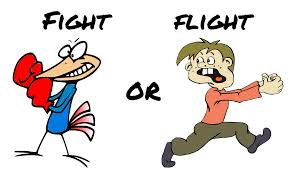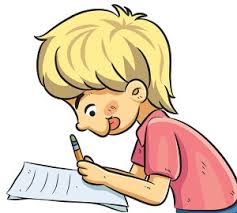What are Primitive Reflexes?
Primitive Reflexes are primal movement patterns that develop in the womb. They help us through the process of birth and to survive our early lives, and operate automatically – like the knee jerk reaction. As we mature from birth to two years of age, these reflexes become inhibited by the development of higher brain functions. As we learn to move in more complex ways – the more primitive ways fade into the background. They are still there but are no longer needed.
Shocks and traumas (sometimes ever minor ones) can prevent the natural process of inhibition and this can lead to the body retaining the primitive reflex and being somewhat ‘stuck’ in a more primitive mode. Symptoms can be seen in physical movement but also in emotional and behavioural states.

What can happen if the Primitive Reflexes are not inhibited?
If they are not inhibited at the appropriate time they are said to be retained. The Primitive Reflexes should be inhibited by 12- 18 months of age. If this does not happen, the person may have these or other symptoms:
- Poor gross motor skills (jumping, skipping, etc)
- Poor fine motor skills (hand- eye coordination, manual dexterity)
- Problems with perception – at all kinds of levels
- Poor social skills
- Emotional issues e.g. anxiety, shyness, aggression.
What causes the Primitive Reflexes to be retained?
There can be many suggested causes but the major ones are:
- Severe stress during the pregnancy.
- Traumatic birth e.g. emergency caesarean.
- Prolonged or breach birth.
- Premature birth
- Significant upsets that cause shock – such as operations, concussions separation from Mom.
The most significant Primitive Reflexes are;
This reflex is the first one we know about. It is essentially the freeze response and is designed to protect you from shock or pain. From my own clinic experience – it will very often become activated if the body / nervous system feels that is under significant threat. The person is temporarily removed from pain or the threat of pain by being ‘absent’. I’ve worked with several children and adults whose freeze response began because of a car crash.
Some of the symptoms of a retained Fear Paralysis Reflex:
- A layer of fear that is present around most decisions or new experiences.
- Withdrawal
- Fear of new things
- Insecurity/ social isolation
- Temper tantrums- often screaming loud & long in a new situation or one they consider threatening- or May go into “freeze mode” unable to think & move at the same time
- Selective Mutism– failure to speak in certain situations and yet be able to speak freely otherwise
- Excessive anxiety over seemingly trivial matters
- Very often present in children with autism
This reflex is basically the ‘fight or flight’ response. Our most basic reaction to threat is to freeze – after that we either fight or run. And again, these actions are controlled by the primal or instinct part of the brain. As babies the Moro reflex occurs so that we can do something to announce to Mom that we are in danger – that’s the theory behind why it is there. So what does it make us do?
In tiny babies their reaction to threat is to fling their arms open, scream and go pale or red in the face. This is the early ‘flight or fight’ reaction. Later in life we will still do this action if we get enough of a fright. More on the Moro Reflex here
When the Moro reflex is retained the person is ‘stuck’ in fight or fright and the feeling that was present when the shock occured (i.e. car crash) is being triggered.
- The child may be hypersensitive and immature or over reactive.
- Moro driven people dislike change and are fearful of new things.
- A change of routine in the classroom, even for something pleasurable, may cause a child to throw a tantrum that seems a huge overreaction to the rest of us.
These children may also react in one of two ways with their peers:
- they may shrink away and be the withdrawn wallflower, observing but not participating, or
- they may want to be the boss of the game all the time.
Other behaviours include;
- constantly on the alert against perceived threat.
- The eyes are constantly wandering to the periphery of the page, the blackboard or the classroom, so that they don’t remain on task.
- They may also have difficulty when reading with the contrast of black print on white paper. Moro driven people can be extremely sensitive in many situations.
- The constant stress involved in its frequent emergence can cause a depleted immune response.
- Difficulty showing and receiving affection as well as problems socialising, They often prefer to play with younger children.
The Bonding Reflex
The reflex has a huge impact on feelings of safety and security. If a child doesn’t feel safe in general, then a whole host of symptoms may be present. Common symptoms include;
- Shyness
- The need for constant reassurance ( needing Mom’s/ Dad’ attention)
- Over sensitive to others feelings
- Difficulties with authority
- The child may be inclined to reject themselves and others with hostility and aggression.
- Learning is made difficult because the child needs constant praise from the teacher.
(11weeks in utero-3months of age)
These symptoms may indicate a retained Palmar reflex.:
- Poor manual dexterity
- Making movements with mouth when drawing.
- Speech problems pencil grip
- The Palmar reflex is the automatic grasping movement of the hand if the palm is touched. It needs to be inhibited for efficient fine motor skills such as writing and sewing movements.
Asymmetric Tonic Neck Reflex
(18 weeks in utero- 6 months of age)
These symptoms may indicate a retained ATNR:
- Difficulty copying symmetrical figures
- Balance affected if head moves to the side
- Awkwardness skipping
- Homolateral marching (same leg & arm)
- Difficulty crossing the midline of the body
- Poor eye tracking especially across the midline
- Difficulty writing if looking at the board
- Difficulty getting ideas onto paper
- Difficulty learning to ride a bike
The mother’s contractions at birth stimulates this reflex and the baby’s movements then cause another contraction to occur. Hand- eye coordination is developed through this reflex: The baby turns its head, the eyes fixate on the hand stretching out or grasping an object. This is the start of awareness of distance. This reflex needs to be inhibited for smooth cross pattern crawling and creeping to develop. Trying to focus on the body position for writing and hanging on to the pencil so that the arm does not extend and fling it away, can require huge effort so it is not surprising that these children avoid written tasks & find school assignments reallystressful.
Spinal Galant
(20 weeks in utero – 9months of age)
If retained you may see these:
- Fidgetting
- Bedwetting
- Poor short term memory & concentration
This reflex like the ATNR plays a part in assisting in the birthing process- as the hip moves it helps the baby into the birth canal. The lower spine on either side is very sensitive to touch so stimulation such as the elastic in underpants or moving against the back of a chair can result in a squirming movement. Stimulation on both sides of the spine simultaneously can cause defecation or wetting if this reflex is strongly retained. It may also affect fluency and mobility in sporting activities.
Tonic Labyrinthine Reflex
If retained you may see these symptoms:
- Poor posture / stooping or walking on toes
- Poor sense of balance
- Car sickness
- Poor sequencing skills
- Lack of organisation
- Poor sense of time
- Stiff jerky movements / poor muscle tone
- Difficulty judging distance, speed and depth
Some of these may seem contradictory symptoms. It is because there are two aspects to this reflex, one related to bending the neck down with the limbs bending & the other in tilting the neck back accompanied by straightening of the limbs. The development of this reflex takes the baby from its floppy curled up foetal position to one of strong muscle tone and the ability to straighten out & walk upright.
Symmetrical Tonic Neck Reflex
( 6- 9 months age — 9- 11months age)
These symptoms may indicate a retained STNR:
- Poor posture
- Can’t sit still
- Slumps when sitting at a desk
- Slow at copying tasks
- Poor hand –eye coordination
- Messy eater
- Clumsy
- Difficulty with overarm swimming
This reflex helps the baby to defy gravity & get up on hands and knees to crawl. It enables the child to move the two halves of the body independently. If retained the child may not crawl on hands & knees but do a “ bear walk” on hands & feet or shuffle along on their bottoms. A very important reflex for training the eyes to cross the midline, looking from one hand to the other as crawling develops. In reading they need to be able to read fluently across the page without losing the words on the midline. Crawling develops interaction between the vestibular, visual & proprioceptive systems. Without this, balance, space & depth perception will be poor.



